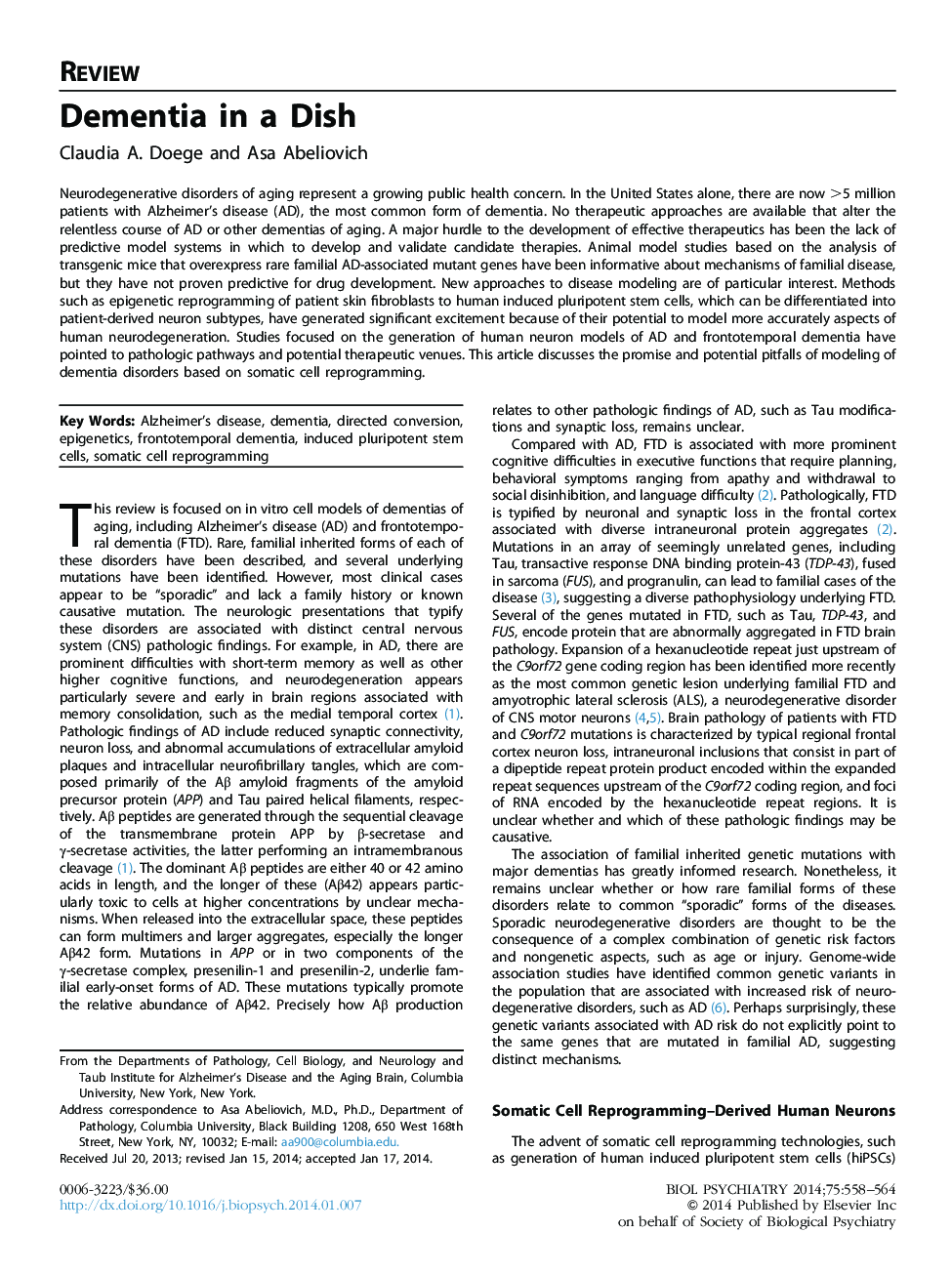| کد مقاله | کد نشریه | سال انتشار | مقاله انگلیسی | نسخه تمام متن |
|---|---|---|---|---|
| 4177742 | 1276449 | 2014 | 7 صفحه PDF | دانلود رایگان |
Neurodegenerative disorders of aging represent a growing public health concern. In the United States alone, there are now >5 million patients with Alzheimer’s disease (AD), the most common form of dementia. No therapeutic approaches are available that alter the relentless course of AD or other dementias of aging. A major hurdle to the development of effective therapeutics has been the lack of predictive model systems in which to develop and validate candidate therapies. Animal model studies based on the analysis of transgenic mice that overexpress rare familial AD-associated mutant genes have been informative about mechanisms of familial disease, but they have not proven predictive for drug development. New approaches to disease modeling are of particular interest. Methods such as epigenetic reprogramming of patient skin fibroblasts to human induced pluripotent stem cells, which can be differentiated into patient-derived neuron subtypes, have generated significant excitement because of their potential to model more accurately aspects of human neurodegeneration. Studies focused on the generation of human neuron models of AD and frontotemporal dementia have pointed to pathologic pathways and potential therapeutic venues. This article discusses the promise and potential pitfalls of modeling of dementia disorders based on somatic cell reprogramming.
Journal: Biological Psychiatry - Volume 75, Issue 7, 1 April 2014, Pages 558–564
